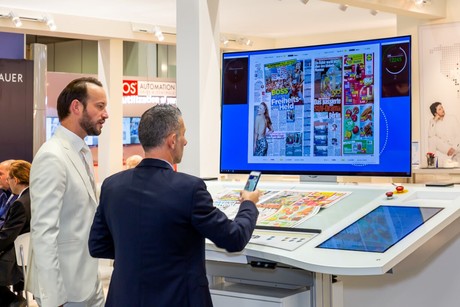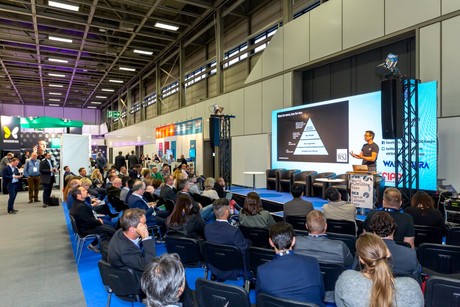If you belong to the almost 15 million people in Germany who start their day by reading a printed newspaper, then this paper was most probably produced with the support of a NELA VCP register punch/bender. The same applies to readers in New York, Hong Kong, Sydney, and many other places around the world.
Since the boom of offset printing in the late 70’s and early 80’s of the last century, aluminum printing plates are needed to print newspapers on large printing presses. These only 0.3mm thick printing plates have to be punched and bent with an exactness of just a few hundredth of a mm in order to have exact color register on press and to make sure that the plates stay fixed in the cylinder locks, given the extreme speeds of the modern presses.
NELA was founded in 1938 and had earned a reputation as a reliable supplier of materials and machines for letterpress printing, later the company started engineering the first register punches and benders for offset printing. Technology evolved rapidly, and soon many newspaper printers installed offset presses. The demand for automated systems that can be installed in-line with plate exposure units, the so-called “computer-to-film” and later “computer-to-plate” systems, was rising continuously. The industry was, at that time, facing tremendous problems with color register that resulted in long mounting times on the presses trying to enhance the quality of the printed products. This was a new challenge for the NELA engineers, who started mounting cameras into the punch/benders to control the exactness of exposure by means of two imaged register marks on each plate. Thanks to the ongoing development of industrial cameras and software and to increasing computer processing powers, it became possible to integrate an axis-controlled, fully automatic alignment of the offset plates prior to punching and bending. From then on it could be guaranteed that the images of one color set – to print color pictures you need 4 printing plates for the 4 print colors cyan, magenta, yellow, and black – fit exactly on press. A technology change had been achieved.
Today, NELA’s optical register punching, bending and pre-press automation systems support newspaper printers around the world in producing press-ready plates just-in-time for the start of the press. International media companies such as the New York Times, the Washington Post, Le Monde, or Times of India are among our customers, just like almost all national and regional newspapers. Printing one edition of a newspaper nowadays often means that hundreds of press-ready plates must be prepared within a very short period of time. For this purpose, NELA designs and builds individual automation solutions including plate sorting and software connection to the printing press. At NELA, everything is under one roof for the benefit of our customers: project planning, engineering and manufacturing of the individual components, assembly, programming, and, of course, worldwide technical service.
NELA’s president Frank Neumeister proudly looks back on the achievement: „Two thousand units is a number of which we hadn’t believed 30 years ago that we would reach it. Many, many hours of engineering, assembly and programming were needed to achieve this, and we are very proud of the team that developed the camera technology at NELA. All members of this team are, by the way, still working for us!”
The ongoing consolidation process in the printing industry and the stable growth of Brüder Neumeister GmbH, have contributed to the fact that the company was able to successfully incorporate several competitors. Today NELA covers the lion’s share of the worldwide plate automation market in the newspaper printing industry. It’s second manufacturing site in the USA and all of the acquisitions included, the number of installed optical register punching and bending systems amounts to around 4,000. Neumeister is optimistic about the future: “Modern newspaper print sites are highly industrialized plants, and we support them with automation solutions for an indispensable part of their production process. Thanks to our know-how and our innovative engineering capabilities we have always been successful in developing new technologies that help our customers print their products faster and more efficiently. It’s the newspaper readers in the first place who benefit from this dedication.”
NELA’s expertise in image processing, automation and process control has opened the doors for diversification into other industries, for example in the field of fully automated visual quality inspection.
(http://www.nela.de/en)
NELA celebrates 2,000 optical register punching and bending systems
NELA celebrates 2,000 optical register punching and bending systems
Article ID:
21977
Lahr and River Falls, WI, 21st June 2018 – In June, Brueder Neumeister GmbH delivered its 2,000th VCP vision punch/bender, the machine is now being installed at the Irish News. This number is a landmark in a success story that began in the early 1980’s and made the family-owned company a world market leader. The technical principle is still used in today’s high-tech NELA machinery.

NELA’s president Frank Neumeister proudly looks back on the achievement.
Related Articles
-
2020-10-15 11:21
-
2020-10-08 10:36
-
2020-09-29 17:42
-
2020-09-29 17:24
-
2020-09-29 10:57




